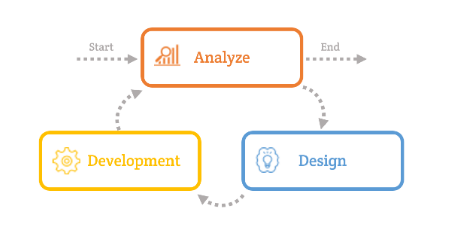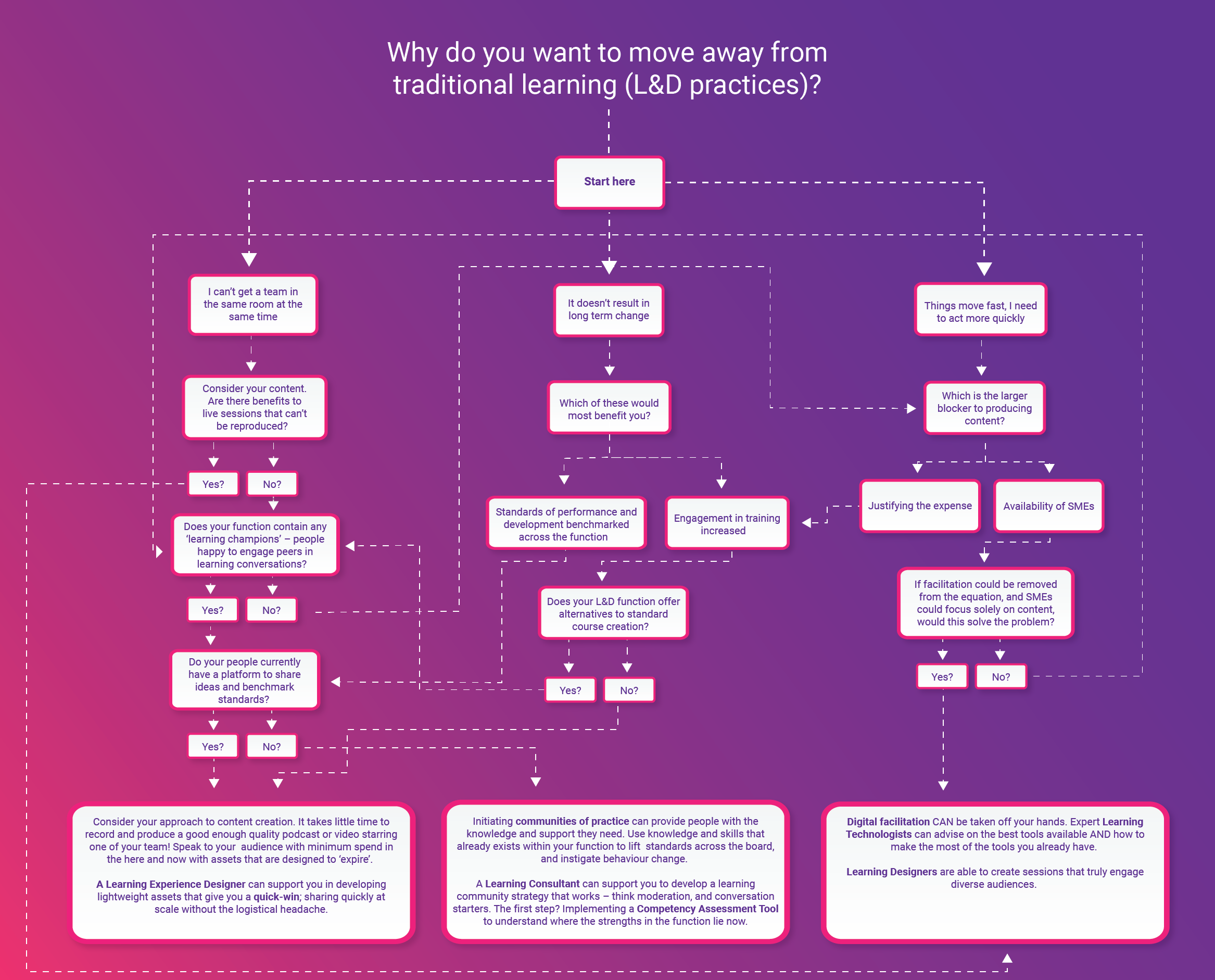It’s exciting to watch eLearning evolve over time. New tools and trends are blossoming, while others fade into buzzword-infamy. But one design principle remains stalwart and necessary. It reminds me of my favourite Wuthering Heights quote:
“My love for Linton is like the foliage in the woods: time will change it, I'm well aware, as winter changes the trees. My love for Heathcliff resembles the eternal rocks beneath: a source of little visible delight, but necessary.”
Linton might have had the flash, but anyone with a soul would root for Heathcliff. Instructional Design (ID), or Learning Experience Designer as it is often called now, is that necessary yet barely visible skill that good elearning will always harness. Even when you cannot see it, in the most interactive of interactions where a paragraph of text would stick out like a sore Graphic Designer’s thumb, it is always there.
It is in the effective learning strategies that justified the interaction’s creation; the curation of the eLearning content that it is delivering; and the distilling of that information to best fit how students learn.
Everybody can tell a story, but it takes a certain skill to tell it well.
Instructional Design: How is the skillset changing?
It can be a role that is ‘fallen into’ rather than one that is actively trained for. As an example, a quick search returns about a 5th as many results for ‘Instructional Design training courses’ as it does for, say, ‘Instructional Design UK’. The development of Instructional Design skills can come from a variety of areas, often accidentally.
Just as Heathcliff returned a mysteriously rich man, some people can pop out of the most surprising fields with the exact qualities a learning designer needs to properly use Instructional Design techniques.
So, where do these skills come from?
Let’s take a look at some Instructional Design core skills that are necessary for a specific 5 principles of Instructional Design good practice, and at how a person could develop them outside the world of eLearning.
|
WHAT IS IT? |
WHY DO YOU NEED IT? |
WHERE COULD IT COME FROM? |
|
A quick grasp of complicated information |
Writing eLearning courses can mean getting proficient at a different job role everyday! From the pharmaceutical industry to charity - you need to be able to dive in head first |
A diverse portfolio will bode well here - be that through formal education or work experience, the ability to make a savvy start, and make it more than once, will come in handy |
|
A ‘get to the point’ mindset |
Subject Matter Experts are experts for a reason - they know a lot. Good Instructional Design disseminates the ‘nice to know’ from the ‘need to know’ to keep the learning experience focussed - you need to be able to ‘get to the point’ of the information you are given with a systematic process |
Writing and delivering reports well can develop this skill. You are sifting through information with your audience in mind, keeping close to the learning objectives and choosing what you will and will not present |
|
A good storytelling ability |
Humanising the content, keeping it succinct, and presenting it in a way that will resonate with the learners is a vital skill that cannot be underestimated - it is future proof and without it good eLearning is impossible |
Any form of writing practice can develop this skill - but the parallel between journalism and eLearning writing has been consistent for a while now. Both need to put succinctness and clarity at the forefront |
|
An eye on the toolkit |
As a digital industry, there are always new kids on the block ready to revamp the world of eLearning. To make the most of content, a good Instructional Design principle is to consider all the presentation and delivery methods available from traditional articulate storyline to virtual reality - you need to have your finger on the pulse |
A background in IT or any form of technology can be a benefit here. More anecdotally, an ability to be flexible and resist relaxing into the status quo will help keep you on your toes |
|
A sympathetic ear |
Good training will have had learner input at some point. A great Learning Experience Designers gets a handle on the advice, experience and even complaints of their future learners, and creates interactive scenarios that can truly resonate |
Meeting, working and collaborating with many people can enhance this skill |
What’s next?
These are the skills of Instructional Design today, and probably will be tomorrow. But how far ahead can these take us? The future of Instructional Design looks bright, and the practice could head in any direction.
Companies are becoming more canny when they outsource content development. They no longer want to be tied down to bulky, labour intensive SCORM courses that need to stay, lingering, on their Learning Management System. They want efficient, flexible, easily updated assets that they can send out to learners however they wish.
Perhaps this need for efficiency will shift our focus and priorities from the story to the delivery method. Maybe we will see an influx of Instructional Design authoring tools for rapid asset creation. It could be that we will meet these changes with faster and more agile Instructional Design models that meet the needs of learners in the very moment, but has a shortened natural shelf life. Conrad Gottfredson would approve of this idea, as reflected in his 5 Moments of Need learning model.
Or, we could be putting the content analysis in the hands of the learners - as some elements of Graphic Design have been with easy-use tools like Canva and Stencil. Some similar free tools for Instructional Designer could begin to appear that allow encourage learners themselves to disseminate their own knowledge, and filter out those crucial ‘need to know’ points. There are models that can be followed for those keen to learn, such as SAM the Successive Approximation Model.
What is the SAM model of Instructional Design?

SAM is an iterative approach to design that allows for multiple iterations of a product, rather than a ‘straight line’ of development. This lets potential issues crop up earlier in the process, saving time and resources in the final stages. As it works best for smaller projects and teams that are using simpler technologies, it is an incredibly valuable tool for a beginner or trainee Instructional Designer to get to grips with.
How do we react now?
Instructional Design skills are a necessity that is here to stay. But how will we keep ourselves accountable in meeting inevitable technological shifts? We may not be able to trust that the evolution of our own personal learning will guide us. Different industries evolve their training needs at different times, and some disappear altogether.
Let’s go back to the basis of why we do what we do, which is to facilitate performance support and solve L&D problems, we need to keep in touch with how individual industries are keeping a handle on these changes themselves.
A key skill we haven’t touched upon yet is understanding people. Good learning and instruction will always look at why people are doing things, be they right or wrong, and then create a solution that could improve those behaviours. Whether that is making the good behaviours easier, or breaking the reasoning for the bad ones.
Communication is the first step to understanding. If we keep in touch, we will not be left behind.
Talk to Logicearth today about how to mix educational technology with instructional design processes to effectively deliver knowledge and skills to your learners.









Was this article helpful?